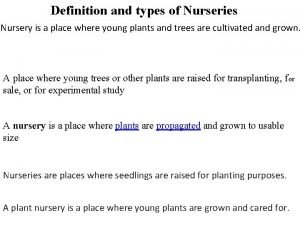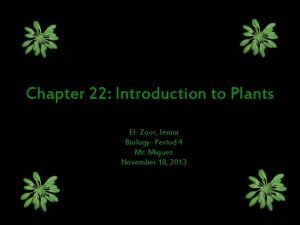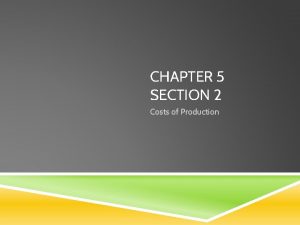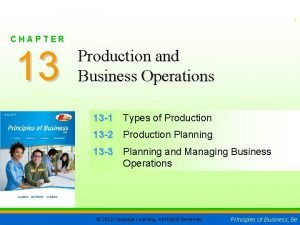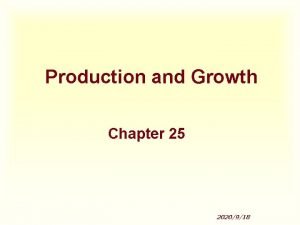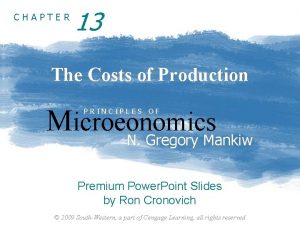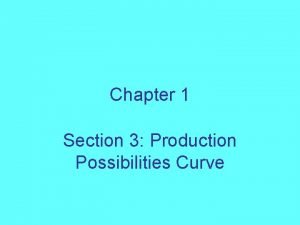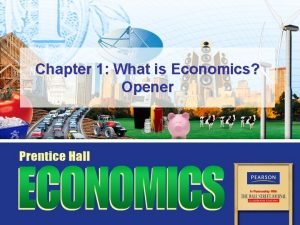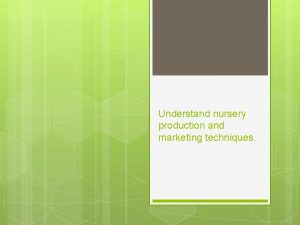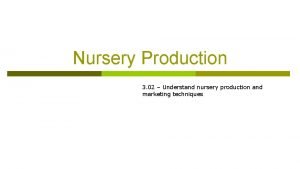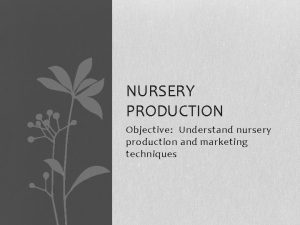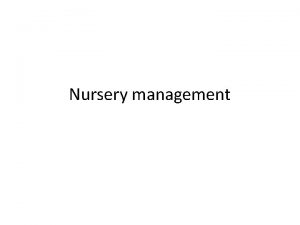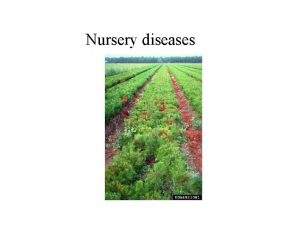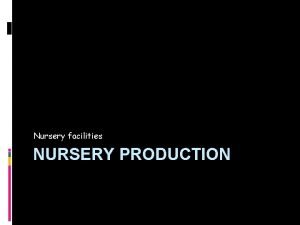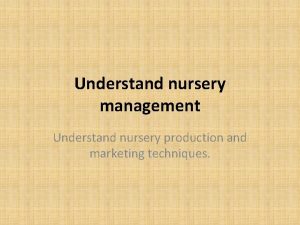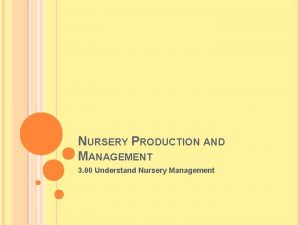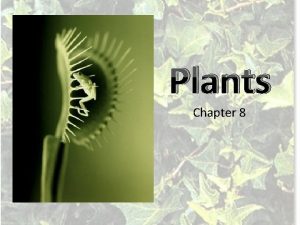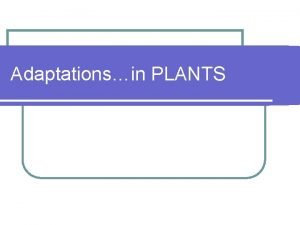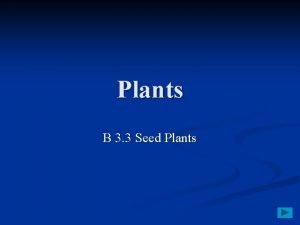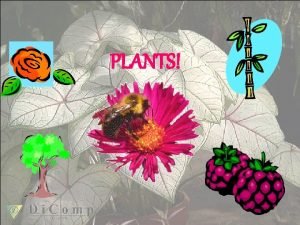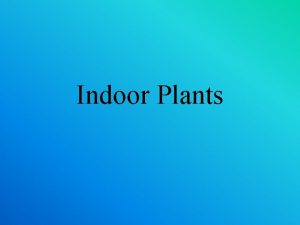Chapter 21 Nursery Production Techniques n Nursery plants


















- Slides: 18

Chapter 21 Nursery Production Techniques

n Nursery plants are produced in specialized production facilities under controlled, monitored conditions to maximize their rate of growth and standardize the quality of the harvested products. n Field nurseries are similar to crop farms. Plants are grown directly in the soil.

n Field nurseries require sites with: rich, well drained soil, few rocks, a reliable and adequate supply of water, and proximity to transportation. n Field nurseries traditionally produce trees and shrubs that require from one to ten years to reach the intended size fro harvest.

Since field grown plants are seldom moved prior to harvest, growers must make careful decisions about spacing between rows in order to make efficient use of the land allow field equipment to reach the plants during their production years. n Container nurseries do not require fertile field sites. n Container grown plants have their root systems intact and suffer less from transplant shock, their acceptance in the marketplace is good. n

n The choice of plants for nursery production is governed by several factors: – Market demand – Production requirement – Production capabilities n Market demand is the driving force that dictates: what plant species will sell, by whom they are sought, what sizes are desired by the purchaser, and what quantities of each species and size will be required.

n Limits to the simplification of crop choices: – Public’s interest in new varieties – Danger of financial loss – Severe insect or disease infection – Change in market demand n Each nursery plant represents an investment of labor and materials as well as heat, water, and other cultural expenses.

Profits are lost when an excess of plants is produced and cannot be sold. n As in other areas of agricultural plant production, the composition of the soil or even the decision to use soil-less media in place of soil, is determined by criteria such as: n – – – the type of crop being grown the stage of growth at the time of harvest the cultural techniques being used the methods of harvest and whether the harvested plant will be bare rooted or balled and burlapped.

n Nursery soils need a structure that promotes nutrient availability to the plants and a proper air and water relationship. n The soil p. H should be between 5. 0 and 7. 2 for most nursery crops. n Field soils used for nursery crops should be high organic.

n Porosity of the medium is of great importance in container plant production. It is the size of the spaces between the particles that comprise the medium. n Large pores hold the air within the medium. Smaller pores hold the water within the medium.

n Factors considered when determining how each nursery field should be laid out: – Eliminating opportunities for erosion. – Using the land as efficiently as possible. – Grouping together plants with similar requirements for cultivation. – Making cultivation and harvest as easy as possible. – Knowing the length of time the crops will be in the field and size to attain. – Knowing whether the field will be harvested all at one time or over a period of time.

n. A single species is planted in side-by-side rows on level land. n Irrigation is a reliable source of water. n The choice of an irrigation system is usually determined by the frequency and duration of the water use.

n 3 degrees of permanency in irrigation: – Permanent irrigation – Semi-portable irrigation – Portable irrigation system n Sprinkler systems are more wasteful of water than tube systems. Example of tube system irrigation

n Nursery plants usually require fertilization to promote healthy growth and bring the plant to the harvest stage as rapidly as possible. n Actual rates of fertilization are dependant on: – The crop – The soil type – Length of growing season

n Fertilizer applied along the side of the rows is called side dressing. n Weeds are much more troublesome for the nursery growers than for the greenhouse grower. n Where chemical pesticides are required, a state’s college of agriculture can provide listings of effective products approved for use on specific crops.

n Scouting of the crops on a regular basis is essential to detect the presence of insects, pathogens, noxious weeds, or animal injury. n Growers must label their nursery crops in a standardized manner that is easily understood by all employees. n Labels of nursery stock must be durable as well as correctly placed.

n Candles = New growth n Using an underground blade in a manner similar to that of the cutting bar in a nursery to prune back the root systems of shrubs and young trees is called root pruning.

Ways nursery growers protect the root system of container and B&B stock plants: Heeling-in: The plants are set into bins or piles of loose material, such as wood shavings or saw dust, deep enough to cover the root ball or containers to a depth that affords the needed insulation. n Over-wintering houses: The plants are placed into white polyethylene covered houses, made as animal proof as possible. n Bordering pots: Container plants are grouped as close together as possible, then surrounded by one or more rows of unplanted containers filled with soil. n Pot-in-pot production: Large, empty pots are buried in the ground up to their lips. Container plants, in slightly smaller pots, are set inside the larger ones. n

n. A cover crop is a rapidly growing, nonnursery crop used to stabilize the soil and prevent erosion. n Green manure is a crop that is rotated in the field with nursery crops. n Cover crops are frequently planted in the fall after the harvest, while green manure crops are usually seeded in the spring and grown through the summer.
 Pengertian production dalam multimedia
Pengertian production dalam multimedia Difference between temporary nursery and permanent nursery
Difference between temporary nursery and permanent nursery Fern is vascular or nonvascular
Fern is vascular or nonvascular Non vascular plants
Non vascular plants Flowering and non flowering plants similarities
Flowering and non flowering plants similarities C3 plants vs c4 plants
C3 plants vs c4 plants Single camera films
Single camera films Production techniques
Production techniques Fonction technique scooter
Fonction technique scooter Chapter 22 introduction to plants worksheet answers
Chapter 22 introduction to plants worksheet answers Chapter 5 section 2 costs of production
Chapter 5 section 2 costs of production Chapter 13 study guide production and business operations
Chapter 13 study guide production and business operations Chapter 25 production and growth
Chapter 25 production and growth Chapter 18 the markets for the factors of production
Chapter 18 the markets for the factors of production Active learning 3 calculating costs
Active learning 3 calculating costs Production possibilities curve def
Production possibilities curve def Chapter 1 section 3 production possibilities curves
Chapter 1 section 3 production possibilities curves Chapter 41 telephone techniques
Chapter 41 telephone techniques Chapter 15:4 observing standard precautions
Chapter 15:4 observing standard precautions

